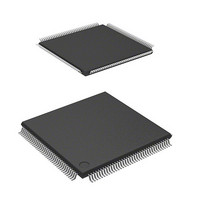DF2166VT33WV Renesas Electronics America, DF2166VT33WV Datasheet - Page 451

DF2166VT33WV
Manufacturer Part Number
DF2166VT33WV
Description
MCU 16BIT FLASH 3V 512K 144-TQFP
Manufacturer
Renesas Electronics America
Series
H8® H8S/2100r
Datasheet
1.HS2168EPI61H-U.pdf
(876 pages)
Specifications of DF2166VT33WV
Core Processor
H8S/2000
Core Size
16-Bit
Speed
33MHz
Connectivity
I²C, IrDA, LPC, SCI, SmartCard
Peripherals
POR, PWM, WDT
Number Of I /o
106
Program Memory Size
512KB (512K x 8)
Program Memory Type
FLASH
Ram Size
40K x 8
Voltage - Supply (vcc/vdd)
3 V ~ 3.6 V
Data Converters
A/D 8x10b; D/A 2x8b
Oscillator Type
External
Operating Temperature
-20°C ~ 75°C
Package / Case
144-TQFP, 144-VQFP
Lead Free Status / RoHS Status
Lead free / RoHS Compliant
Eeprom Size
-
Available stocks
Company
Part Number
Manufacturer
Quantity
Price
Company:
Part Number:
DF2166VT33WV
Manufacturer:
Renesas Electronics America
Quantity:
135
Company:
Part Number:
DF2166VT33WV
Manufacturer:
Renesas Electronics America
Quantity:
10 000
- Current page: 451 of 876
- Download datasheet (5Mb)
which is prescribed by the smart card standard, and corresponds to state Z. Since the SINV bit of
this LSI only inverts data bits D7 to D0, write 1 to the O/E bit in SMR to invert the parity bit in
both transmission and reception.
14.7.3
Block transfer mode is different from normal smart card interface mode in the following respects.
• If a parity error is detected during reception, no error signal is output. Since the PER bit in SSR
• During transmission, at least 1 etu is secured as a guard time after the end of the parity bit
• Since the same data is not re-transmitted during transmission, the TEND flag in SSR is set 11.5
• Although the ERS flag in block transfer mode displays the error signal status as in normal
14.7.4
Only the internal clock generated by the internal baud rate generator can be used as a
communication clock in smart card interface mode. In this mode, the SCI can operate using a basic
clock with a frequency of 32, 64, 372, or 256 times the bit rate according to the BCP1 and BCP0
settings (the frequency is always 16 times the bit rate in normal asynchronous mode). At
reception, the falling edge of the start bit is sampled using the internal basic clock in order to
perform internal synchronization. Receive data is sampled at the 16th, 32nd, 186th and 128th
rising edges of the basic clock pulses so that it can be latched at the center of each bit as shown in
figure 14.28. The reception margin here is determined by the following formula.
Assuming values of F = 0, D = 0.5, and N = 372 in formula (1), the reception margin is
determined by the formula below.
is set by error detection, clear the bit before receiving the parity bit of the next frame.
before the start of the next frame.
etu after transmission start.
smart card interface mode, the flag is always read as 0 because no error signal is transferred.
M = (0.5 –
M = (0.5 – 1/2 x 372) x 100 [%] = 49.866%
Block Transfer Mode
Receive Data Sampling Timing and Reception Margin
M:
N:
D:
L:
F:
Reception margin (%)
Ratio of bit rate to clock (N = 32, 64, 372, 256)
Clock duty (D = 0 to 1.0)
Frame length (L = 10)
Absolute value of clock rate deviation
2N
1
) – (L – 0.5) F –
D – 0.5
N
(1 + F) × 100 [%]
Rev. 3.00, 03/04, page 409 of 830
... Formula (1)
Related parts for DF2166VT33WV
Image
Part Number
Description
Manufacturer
Datasheet
Request
R

Part Number:
Description:
KIT STARTER FOR M16C/29
Manufacturer:
Renesas Electronics America
Datasheet:

Part Number:
Description:
KIT STARTER FOR R8C/2D
Manufacturer:
Renesas Electronics America
Datasheet:

Part Number:
Description:
R0K33062P STARTER KIT
Manufacturer:
Renesas Electronics America
Datasheet:

Part Number:
Description:
KIT STARTER FOR R8C/23 E8A
Manufacturer:
Renesas Electronics America
Datasheet:

Part Number:
Description:
KIT STARTER FOR R8C/25
Manufacturer:
Renesas Electronics America
Datasheet:

Part Number:
Description:
KIT STARTER H8S2456 SHARPE DSPLY
Manufacturer:
Renesas Electronics America
Datasheet:

Part Number:
Description:
KIT STARTER FOR R8C38C
Manufacturer:
Renesas Electronics America
Datasheet:

Part Number:
Description:
KIT STARTER FOR R8C35C
Manufacturer:
Renesas Electronics America
Datasheet:

Part Number:
Description:
KIT STARTER FOR R8CL3AC+LCD APPS
Manufacturer:
Renesas Electronics America
Datasheet:

Part Number:
Description:
KIT STARTER FOR RX610
Manufacturer:
Renesas Electronics America
Datasheet:

Part Number:
Description:
KIT STARTER FOR R32C/118
Manufacturer:
Renesas Electronics America
Datasheet:

Part Number:
Description:
KIT DEV RSK-R8C/26-29
Manufacturer:
Renesas Electronics America
Datasheet:

Part Number:
Description:
KIT STARTER FOR SH7124
Manufacturer:
Renesas Electronics America
Datasheet:

Part Number:
Description:
KIT STARTER FOR H8SX/1622
Manufacturer:
Renesas Electronics America
Datasheet:

Part Number:
Description:
KIT DEV FOR SH7203
Manufacturer:
Renesas Electronics America
Datasheet:











